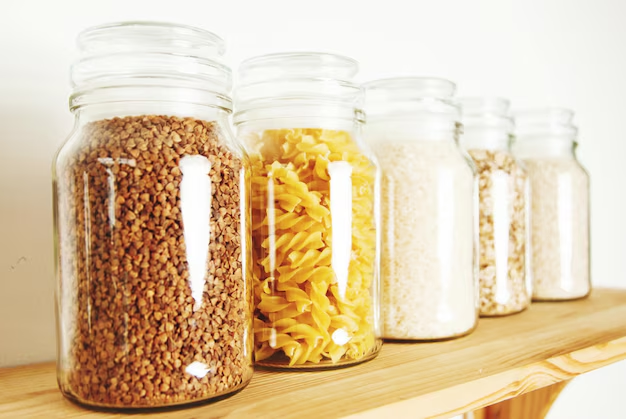How Long Can You Keep Cooked Noodles in the Fridge? A Comprehensive Guide
Ever opened your fridge, stared at that leftover spaghetti, and thought, "Is this still good to eat?" You're not alone. Proper food storage is crucial to maintaining not just the taste of your leftovers but also their safety. In this guide, we’ll explore everything you need to know about storing cooked noodles, so you can enjoy them safely.
🍝 The Basics: Shelf Life of Cooked Noodles
When stored correctly, cooked noodles typically last 3 to 5 days in the refrigerator. However, factors like storage conditions, the type of noodles, and any added ingredients can influence their longevity.
Common Types of Cooked Noodles
Spaghetti and other pasta
These are often oil or sauce-coated to prevent them from sticking together. When stored appropriately, they adhere to the common 3-5 day rule.Asian noodles (like ramen or soba)
Since some are oilier, they might last closer to the upper end of the range. Always consider any additional ingredients mixed in, such as sauces or proteins, which might have different shelf lives.Rice noodles
These tend to degrade more quickly, so being vigilant about storage times is critical.
Factors Affecting Shelf Life
- Temperature: For optimal preservation, keep your fridge at or below 40°F (4°C).
- Air exposure: Store noodles in airtight containers to prevent moisture loss and the absorption of fridge odors.
- Ingredients: If your noodles contain meat, seafood, or dairy, their shelf life might decrease, as these ingredients can spoil faster.
📌 Essential Storage Tips
Knowing how to store noodles correctly ensures they remain tasty and safe for longer.
Cool Quickly: Before refrigerating, allow noodles to cool at room temperature for no more than two hours to avoid bacterial growth.
Use Airtight Containers: Seal the noodles in a container that prevents air from entering. This also helps avoid cross-contamination and keeps them from drying out.
Avoid Overpacking: If you have a large quantity of leftovers, divide them into smaller containers to promote even cooling.
Label and Date: Stick a note with the cooking date on the container to keep track of freshness.
Avoid Pre-mixing: If possible, store noodles and sauce separately to maximize their storage life.
🥢 Recognizing Spoilage
It’s crucial to identify indicators that your noodles are no longer safe to consume.
Signs Your Noodles Have Gone Bad
- Unusual odor: A sour or off smell is a clear indicator of spoilage.
- Discoloration: If the noodles appear discolored, they’ve likely gone bad.
- Slimy texture: This texture indicates bacterial growth.
- Mold: Visible mold is a sure sign they should be discarded.
Whenever in doubt, it's always safer to err on the side of caution and discard them rather than risking foodborne illnesses.
🚫 The Risks of Consuming Expired Noodles
Eating spoiled noodles can lead to discomfort and food poisoning. Symptoms might include nausea, vomiting, diarrhea, and stomach cramps. If any of these occur after eating leftovers, consider consulting a healthcare professional.
🍲 Extending Shelf Life: Alternative Methods
Freeze for Longevity
Freezing cooked noodles can extend their shelf life for up to two months, preserving both their flavor and texture.
Freezing Tips:
- Cool the noodles thoroughly before freezing.
- Divide them into meal-sized portions in freezer-safe bags or containers.
- Remove as much air as possible to prevent freezer burn.
- Label and date the packages.
Reheating Frozen Noodles
When you're ready to enjoy your noodles, thaw them overnight in the refrigerator. Reheat on the stove with a splash of water, broth, or sauce to revive their texture. Alternatively, microwaving is convenient—just ensure even heating by stirring occasionally.
🌿 Sustainability and Waste Reduction
Being mindful of food waste is essential. Here’s how you can reduce it:
Plan Meals Ahead: By managing serving sizes, you’ll reduce leftovers.
Repurpose Leftovers: Creatively incorporate leftover noodles into soups, salads, or stir-fries.
Compost: For unavoidable waste, consider composting plant-based noodle scraps.
🛡️ Keeping It Safe: A Quick Checklist
- ✅ Refrigerate cooked noodles within two hours.
- ✅ Store them in airtight containers.
- ✅ Consume within 3-5 days.
- ✅ Check for spoilage before eating.
- ✅ Freeze for longer storage.
💡 Summary: Key Takeaways
Here's a concise bullet-point list of practical tips for storing cooked noodles effectively:
- 🕒 Time: Cool and refrigerate within two hours.
- 🥣 Storage: Use airtight containers.
- 📆 Duration: Consume within 3-5 days.
- 🔍 Check: Be vigilant for signs of spoilage before eating.
- ❄️ Freeze: For long-term storage, freeze in meal-sized portions.
- ♻️ Reduce Waste: Plan portions and creatively use leftovers.
Understanding these basic principles will empower you to keep your noodles tasty and safe, saving you money and reducing waste. Proper food storage not only preserves quality but also ensures that both you and your family can enjoy your meals safely. Bon appétit!
